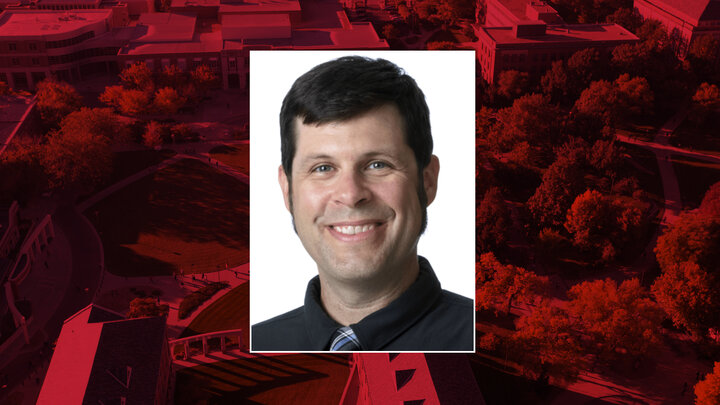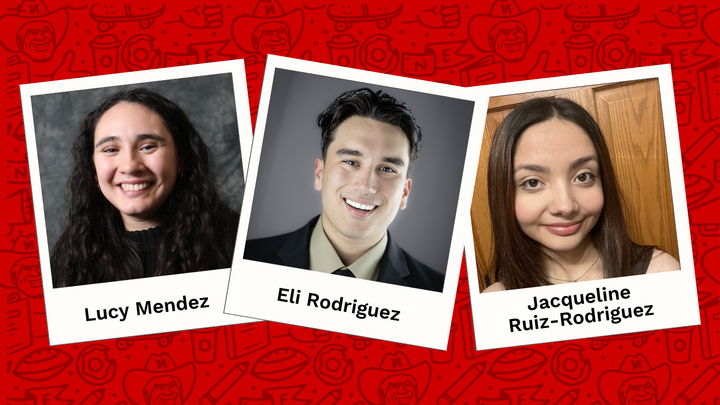In 2023-2024, the college made progress in implementing a curriculum that will bridge research and practice in our graduate program.
The college launched an accelerated master’s program that was approved by the university in 2022-2023. The program offers undergraduate students the chance to earn their bachelor’s and master’s degrees in five years. During the fall of 2023, the Associate Dean for Academic program solidified the application process with the Office of Graduate Studies. In the spring of 2024, the college accepted the first student into the accelerated program.
In the spring of 2023, the college faculty approved the creation of a graduate certificate in sports media and communication. During 2023-2024, the college gained the approval of the Executive Vice Chancellor and the Academic Planning Committee for the proposal.
To enhance the graduate student experience, the Associate Dean for Academic Programs, working with the Director of Advising and the Administrative Coordinator, launched a graduate student Canvas page to provide students with information to support their degree progress. The page includes information on college policies and procedures, degree requirements and upcoming courses.
To recruit additional graduate students, the College partnered on a pilot marketing initiative with Kevin Shriner, assistant vice chancellor for digital and online learning. Through the pilot, the college developed a landing page for our integrated media and communications programs, participated in their digital marketing campaign and developed an automated drip campaign through Target X to respond to inquiries. As a result of these efforts, the college received 18 inquiries into the program in Spring 2024.
Additionally, on May 10, 2024, the faculty approved a graduate handbook that articulates minimum requirements for graduate students to continue in our programs and procedures for probation and dismissal.
Review of the Strategies
| Strategy | Status | |
| 1 | Develop a doctoral program designed for working professionals | In Progress |
| 2 | Build 4+1 master’s programs to encourage undergraduates to continue education | Finished |
| 3 | Create certificate programs based on industry demand and faculty areas of expertise that serve students in multiple graduate programs | Finished |
| 4 | Optimize rotation of courses to ensure consistent offerings, maximize faculty resources and allow students to plan | In Progress |
| 5 | Continue to develop online course offerings with trained faculty | Finished |
| 6 | Develop a system to recognize faculty mentoring/advising of graduate students | Uninitiated |
| 7 | Enhance the graduate student experience, including on-boarding, advising, and degree completion | In Progress |
| 8 | Identify and allocate funding for graduate student travel to present research and creative activity | Uninitiated |
| 9 | Develop an assessment plan for all graduate programs and courses and adjust curriculum as indicated | In Progress |
| 10 | Build industry and academic relationships to establish pipelines for our graduate programs | In Progress |
| 11 | Create an ELL option for professional master’s students | Finished |
| 12 | Increase the number of funded graduate assistantships with industry partners | Uninitiated |
| 13 | Increase the number of graduate students dedicated to research assistance | In Progress |
| 14 | Explore ACEJMC accreditation for our graduate programs | Finished |
Proposed Amendments
- Eliminate target 2, “Increase graduate course offerings by 10%.” The strategic planning committee concluded that course offerings should align with program enrollment and therefore this target is an inaccurate measure of our goals.
- Eliminate target 3, “Increase funding for 6 additional graduate students.” The strategic planning committee concluded that this target is unrealistic given our recent budget cuts and constraints.
- Amend the method of measuring target 4, “100% of faculty teaching online courses will have completed training,” to use faculty meeting attendance (at least three during the academic year) instead of participation in the Summer Institute for Online Teaching.
Review of the Targets
Aim 2 Targets | 20-21 | 21-22 | 22-23 | 23-24 | 25-26 (Goal) |
| Graduate Enrollment by 20%[i] | 82 | 90 | 65 | 64 | 98 |
Proposed Elimination | |||||
Proposed Elimination | |||||
| 100% Faculty who have completed online course training[ii] | 47% | 44% | 47.2% | 100% | 100% |
The college’s graduate enrollment declined by one student between 22-23 and 23-24. However, the college graduated its largest class of master's and certificate students ever during 22-23 at 64 degrees awarded. The large graduating class, combined with only a decrease in one student in grad enrollment, indicates that the college is successfully recruiting new graduate students.
Faculty completion of online training is measured using the new proposed method for 2023-2024. In previous years, the prior method of faculty completion of the SIOT was used.
[i] Figure from the Office of Institutional Effectiveness and Analytics Enrollment by College and Student Level Fall 2023 report
[ii] Figure manually counted from faculty meeting minutes




